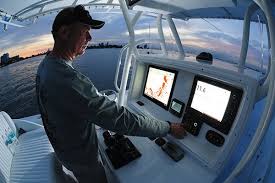
You've ripped off the shrinkwrap, de-winterized the powerplant, and lovingly rubbed a fresh coat of wax on the hull, but are you really ready for your shakedown cruise?
It's been a long, cold winter, and we're getting excited — no, thrilled — to get our boats back into the water ASAP.
But hold on there a moment, captain, and let's slow things down a bit. Even though your boat's been mothballed for months and you've gone through the usual pre-launch preparations, your shakedown could be disastrous if you don't take the time to check for these common issues.
Communications breakdown.
How many times have you left the dock only to discover that your VHF radio wasn't functioning properly? Dead mics, glitchy connections, and internal gremlins always seem to cause problems after a long layup, even though the radio may have been well-protected and under cover. If you usually do your spring radio check during your shakedown cruise, you won't discover the issue until — once again — your radio fails to work when you're already underway. So this spring, do that radio check before you cast off your lines. If you make your initial run early in the season and air temperatures are still below 50 degrees, pay extra attention to plastic VHF antenna mounts. These tend to get brittle in the cold, and can snap if the antenna whips back and forth violently. And for future reference, it would be a good idea to upgrade that plastic mount to stainless steel. Don't forget to check your handheld radio, too — make sure it's charged and ready to go.
Lower unit disaster.
Picture your first launch of the year: It's a beautiful spring afternoon, for the first time in months you feel the humming of the engine as its vibrations run through the fiberglass, a cool breeze blows through your hair, and then, there's a sudden KA-CHUNK! Forward motion ceases. Your boat settles into the water, and you're stuck. Bummer. What could be worse than blowing your lower unit, on your first trip of the year? Water intrusion in the gearcase over the winter can lead to such a disaster, yet go unseen during spring outfitting. Even a tiny amount of water can cause freeze damage that cracks metal and pops seals. Finding the problem and taking care of it before you run the boat will save a lot of time and money on repairs. So check the lower unit to make sure it's full of clean lube before that initial launch. Also check the ground below the skeg, and look for drips. Should you see any, head directly for your marine mechanic. If you make a habit of changing your lower unit lube in the fall, when you pull the boat for the season, you'll spot any water in the mix before it has the chance to freeze and cause harm.
Dated gear.
Okay, this is an obvious one. Yet it's worth bringing up because year after year, the Coast Guard busily writes citation after citation for expired flares and empty fire extinguishers. It may seem like you replaced them just yesterday, but the seasons slide by so quickly it's easy to lose track. Flares expire 42 months from the date of manufacture, not the date you bought them. Don't even think of launching this spring until you've checked and double-checked expiration dates and charge levels. Otherwise, you could end up with a ticket, or worse yet, in an emergency situation with ineffective safety gear.